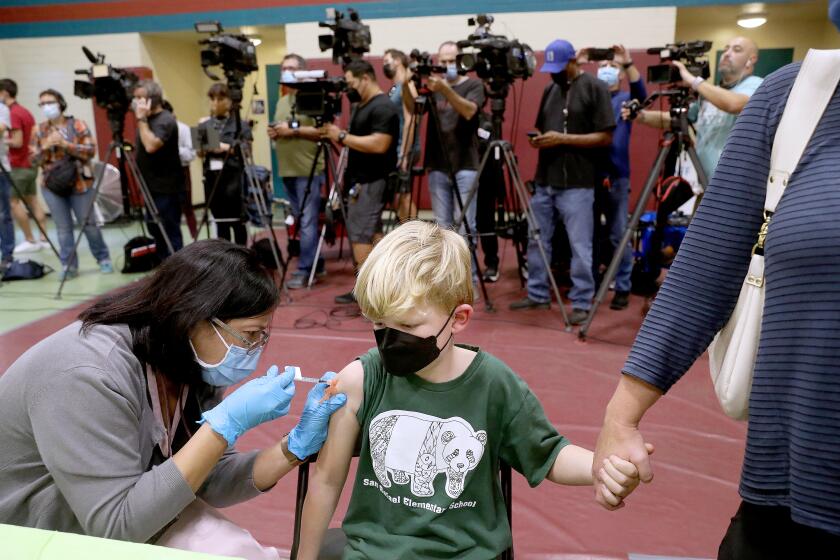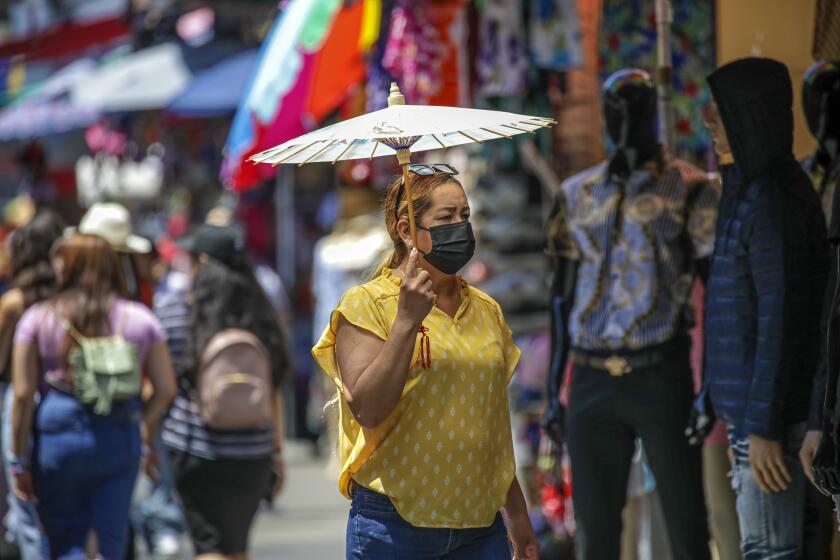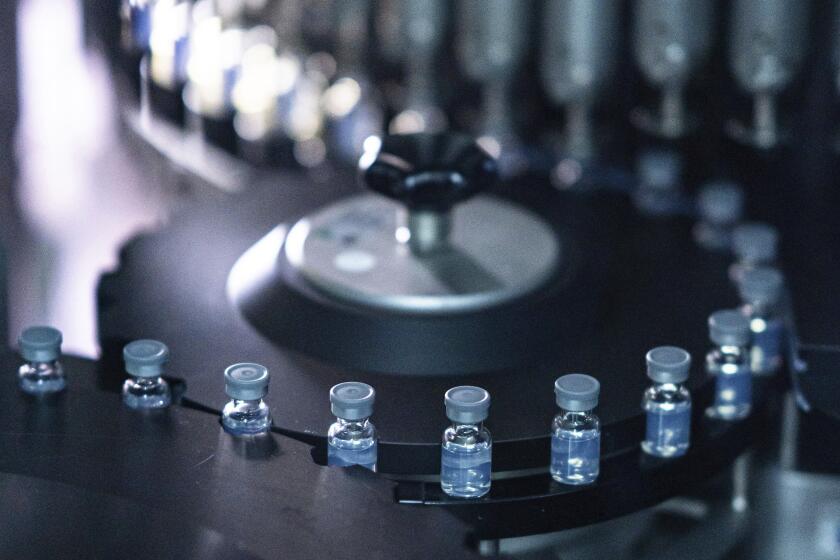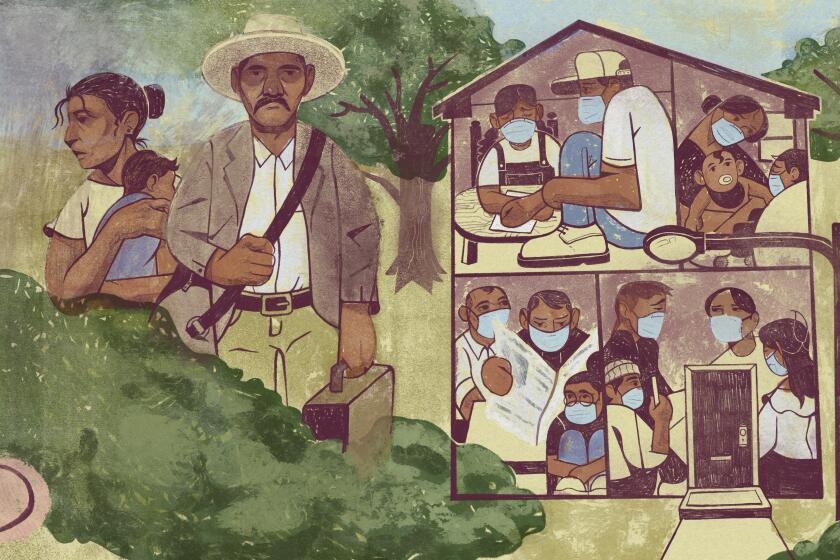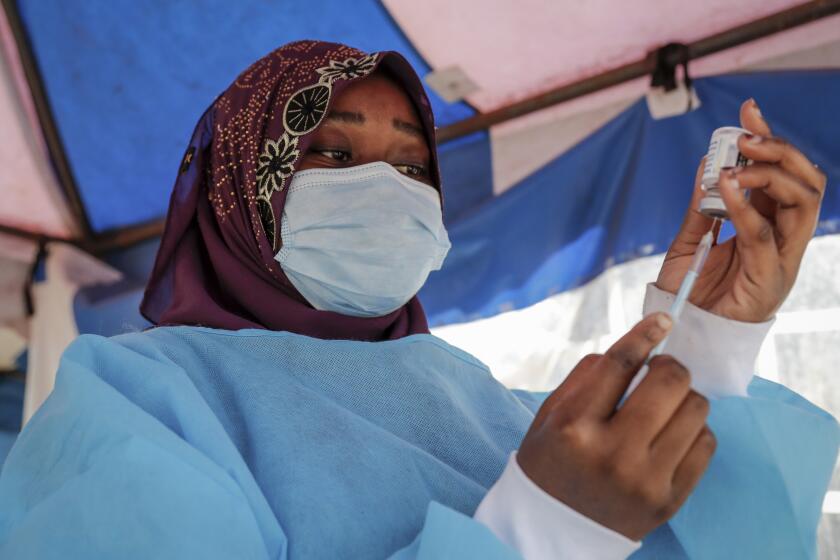Newer coronavirus subvariants ticking up in California amid concerns of winter wave
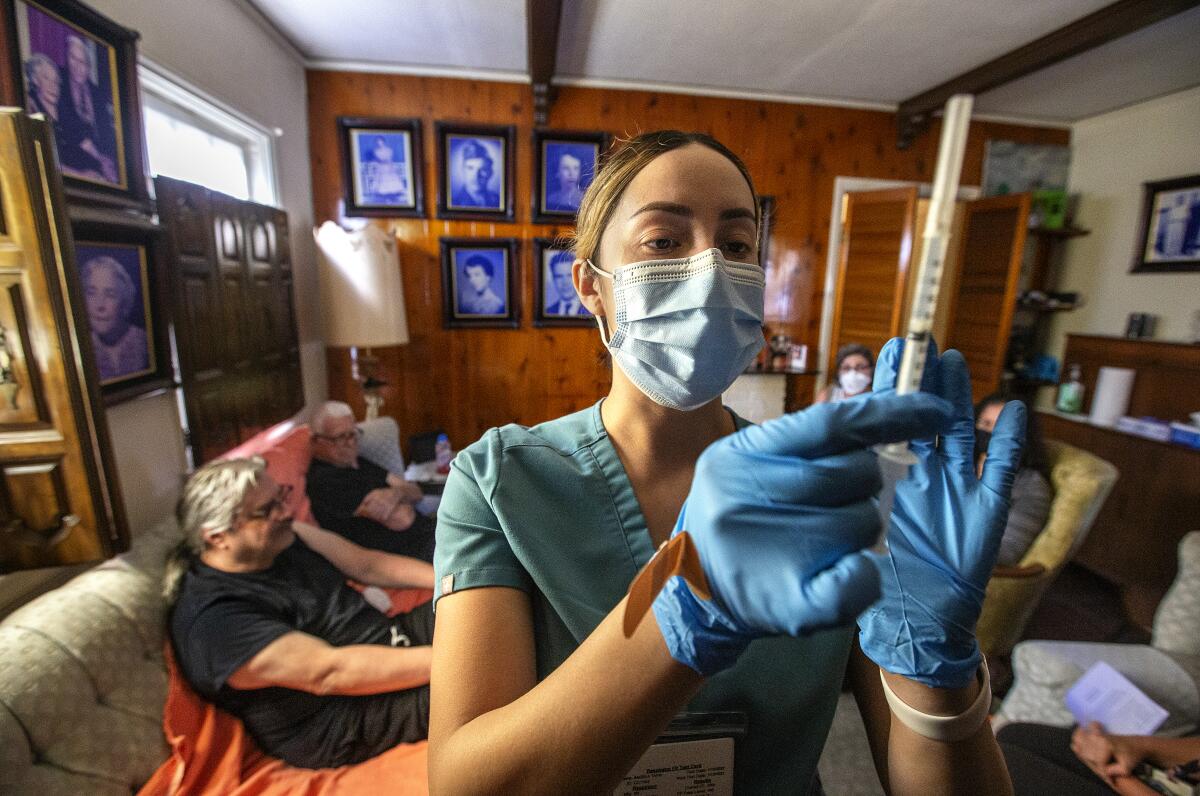
- Share via
Amid concerns about a potential winter COVID-19 wave, cases linked to newer coronavirus subvariants are starting to creep up in California as officials in both Los Angeles County and the San Francisco Bay Area warn that a lengthy decline in new infections appears to be stalling.
Whether this trend in coronavirus cases can be blamed on the rise of the newer strains is unclear — especially since the Omicron subvariant BA.5 remains the dominant version nationwide, as has been the case for months.
But officials have long warned that any new subvariant could imperil the progress against COVID-19, either by being inherently more infectious or better able to evade protection from vaccinations or previous infections.
The latest generation of alphanumerically designated Omicron subvariants may have such an advantage, even over the hyper-infectious BA.5.
BA.5 “appears to be gradually accounting for fewer sequenced specimens, indicating that other variants could become more dominant in the future,” according to Los Angeles County Public Health Director Barbara Ferrer.
The erosion of BA.5’s dominance has been slow but steady. Such changes “could indicate the beginning of a growth advantage by some of the other strains,” Ferrer said Thursday during a weekly briefing.
In Los Angeles County, officials plan to offer the updated boosters for children as young as 5 at an estimated 625 sites starting as soon as Wednesday.
According to the latest data from the U.S. Centers for Disease Control and Prevention, BA.5 accounts for an estimated 62% of all new coronavirus cases nationwide. However, that share has fallen markedly from mid-August, when it was thought to be behind more than 86% of cases.
In the southwestern U.S., which includes California, Arizona, Nevada, Hawaii and the U.S. Pacific territories, BA.5 remains more common, accounting for an estimated 72% of all new cases during the latest analysis period.
A few other Omicron subvariants also have risen in prominence. BQ.1.1, which some officials have pointed to as a potentially problematic strain, went from an estimated 0.2% of cases nationwide in mid-September to 7.2% this month. During that same time, BQ.1 has swelled its estimated share from 0.5% to 9.4%, while BF.7 — also known as BA.5.2.1.7 — has increased from 1.9% to 6.7%.
In L.A. County, data from the week ending Oct. 1 also point to a decline in BA.5’s dominance and new subvariants making up an increasing share of cases.
But while BQ.1 and BQ.1.1, both descendants of BA.5, are gaining ground nationwide, only a handful of such cases have been documented in L.A. County. Seven have been attributed to BQ.1 and three to BQ.1.1.
Health officials say the strain is worrisome because it may evade prior protections and not respond to current vaccines.
Another Omicron subvariant, BA.2.75.2, represents only 0.2% of cases per week in L.A. County, a rate that has been stable for three weeks. L.A. County also has not reported any cases of the XBB subvariant that has been spreading in Singapore, according to Ferrer.
Some researchers in China have found evidence that XBB “can evade antibody protections developed after BA.5 infection. We don’t yet know the full implications of this,” Ferrer said.
“Some of these mutations make it easier to evade prior immunity, meaning that many of us can be reinfected even if we were previously infected with a strain of Omicron earlier this year,” she added. “And while there’s no immediate risk given the relatively low numbers of recently sequenced specimens of these new sublineages in L.A. County, we do need to be vigilant.”
While newer strains have some mutations that could provide a growth advantage, it’s unclear whether any will cause more severe symptoms than their predecessors.
And many officials and experts remain generally optimistic that available vaccines — particularly the recent released bivalent boosters — should continue to provide strong protection against the latest round of subvariants.
“We understand that there may be COVID fatigue, but we cannot let our guard down,” the California Department of Public Health wrote in a recent statement to The Times. “Our statewide COVID-19 vaccination campaign is still working with community partners across the state to emphasize the importance of staying up-to-date on their COVID-19 vaccines and boosters.”
Although a person’s schedule could change depending on health, occupation or travel plans, officials generally recommend the dose before holiday season.
The updated boosters are designed to target the original version of the coronavirus — incorporating the same formula as the vaccines available since late 2020 — and the BA.4 and BA.5 Omicron subvariants. Many of the newer strains are descendants of those subvariants.
“Do I worry about the alphabet soup of new variants of concern, today’s biggies: BQ.1 & XBB? Sure, but there’s nothing we can do about them other than watch their prevalence; get boosted — even if they’re partly immune evasive, you’ll be better protected with the boost than not,” Dr. Robert Wachter, chair of UC San Francisco’s Department of Medicine, wrote on Twitter on Wednesday.
Wachter added that, at a societal level, he’s “most worried about the low level of uptake of the new booster,” which he said only about 5% of eligible Americans have received.
“That low uptake will translate into tens of millions of preventable cases, and thousands of preventable deaths — most of the latter in high-risk groups,” Wachter wrote.
It’s the cruel paradox at the center of Los Angeles housing.
California has made significant progress since the height of last summer’s COVID wave, with cases and hospitalizations plunging in recent months. But those declines may be slowing.
L.A. County reported 874 coronavirus cases a day for the seven-day period that ended Friday, or 61 cases a week for every 100,000 residents. That represents an 8% decline from the prior week. By contrast, the prior week-over-week decline was 17%.
The San Francisco Bay Area reported 60 cases a week for every 100,000 residents for the seven-day period that ended Tuesday — no change from the prior week. The previous week-over-week decline was 15%.
In addition, “we’re no longer seeing any substantial declines in wastewater concentration, which may mean that viral transmission is no longer decreasing in L.A. County. We’ll have to see,” Ferrer said.
Her observations echoed those of Dr. Matt Willis, Marin County’s health officer. Willis warned a week earlier that the rate at which lab-based coronavirus tests are coming back positive was starting to tick up, from 4.5% to 6.5%, in recent weeks.
“Since the start of the pandemic in Marin, every surge has been preceded by an increase in percent positivity,” Willis said. “Also the previous downward trend in our wastewater has stalled. And we’ll have to be following that closely.”
Los Angeles County health experts are carefully watching a rise in coronavirus cases in Britain, France, Germany and Italy as a potential predictor for trending cases in the United States.
Willis cautioned that developments in Europe and the eastern U.S. suggest pandemic trends are worsening.
“In Europe, there’s a clear surge in cases and hospitalizations. And we’re seeing significant increases in virus levels in Massachusetts wastewater,” he said.
But in those cases, Willis said the uptick isn’t being fueled mostly by a recently emerged strain.
“It’s important to note that these surges are being fueled by our regular BA.5 variant of Omicron, which means this: BA.5 can apparently surge, subside for a few months, and resurge again in the same communities,” he said. “We really haven’t seen that much before.”
Previous COVID-19 surges have largely coincided with the emergence of a new coronavirus variant or subvariant. That BA.5 could apparently strike twice “means that waning immunity, changing weather and/or changing behaviors are the culprit,” according to Willis.
“Whatever the reason, it’s concerning for us because as a community, we look a lot like Massachusetts and those parts of Europe where surges are occurring,” he said. “We’re highly vaccinated, we’re coming into colder weather and we’re coming off a BA.5 surge a few months ago.”
In addition, new subvariants circulating abroad could amplify an autumn wave, Willis said.
“BQ.1 is increasing in Europe and seems to be even more infectious than BA.5,” he said. “The good news, if we can call it that, is that most of these newer variants that are circulating — and may hit here — are actually closely related to BA.5,” so it was a good decision for federal officials to ask vaccine manufacturers to focus on an updated booster designed to protect against BA.5.
The World Health Organization says the number of COVID-19 vaccine doses being given in Africa has dropped by more than 50% over the past three months.
Ferrer said she thinks it’s likely a new strain or subvariant will eventually start crowding out BA.5. But “how quickly that happens and how much of an impact that has on a winter surge, I can’t really estimate at this point,” she said.
While newer subvariants have been slowly increasing, “that doesn’t mean that you can’t have a massive acceleration of spread if something is able to crowd out the rest of the variants that are in place — particularly as we get into the colder months; people are going to be inside more, people aren’t wearing masks,” Ferrer said.
The good news is that the updated Pfizer-BioNTech and Moderna bivalent boosters are designed to protect against the BA.4 and BA.5 Omicron subvariants, “and we expect that this will provide good protection against the BA.4 and BA.5 subvariant and the BQ strains.”
On Wednesday, the CDC allowed the Novavax COVID-19 vaccine to also be used as a booster for adults. But that offering is designed against only the original coronavirus strain, not the BA.4 and BA.5 variants.
The Food and Drug Administration has authorized a booster dose of the COVID-19 vaccine made by Novavax, and the CDC has recommended it.
For most people, a recent infection really does boost the immune system, but that immunity can vary for each person. Overall, Ferrer suggests residents get boosted by the end of October or the start of November.
“I hope that as we get closer to the holidays and the colder weather and more gatherings, each of us can be sure we continue to do our part by staying home when sick; getting tested when exposed, ill or gathering indoors with others at elevated risk; and primarily taking advantage of the new boosters that protect against Omicron,” she said.
Vaccines aren’t the only option for warding off COVID-19. A number of therapeutics — including remdesivir and bebtelovimab, which are administered intravenously, and Paxlovid and molnupiravir, which can be taken orally — can help stave off severe illness and death.
“Over 85,000 doses of oral therapeutics are available right now in L.A. County,” Ferrer said. “We have no shortage.”
The anti-COVID drugs aren’t meant to be a substitute for vaccines. But infections can still happen, “and these medications are invaluable in our toolkit to fight severe outcomes,” she added.
More to Read
Sign up for Essential California
The most important California stories and recommendations in your inbox every morning.
You may occasionally receive promotional content from the Los Angeles Times.
